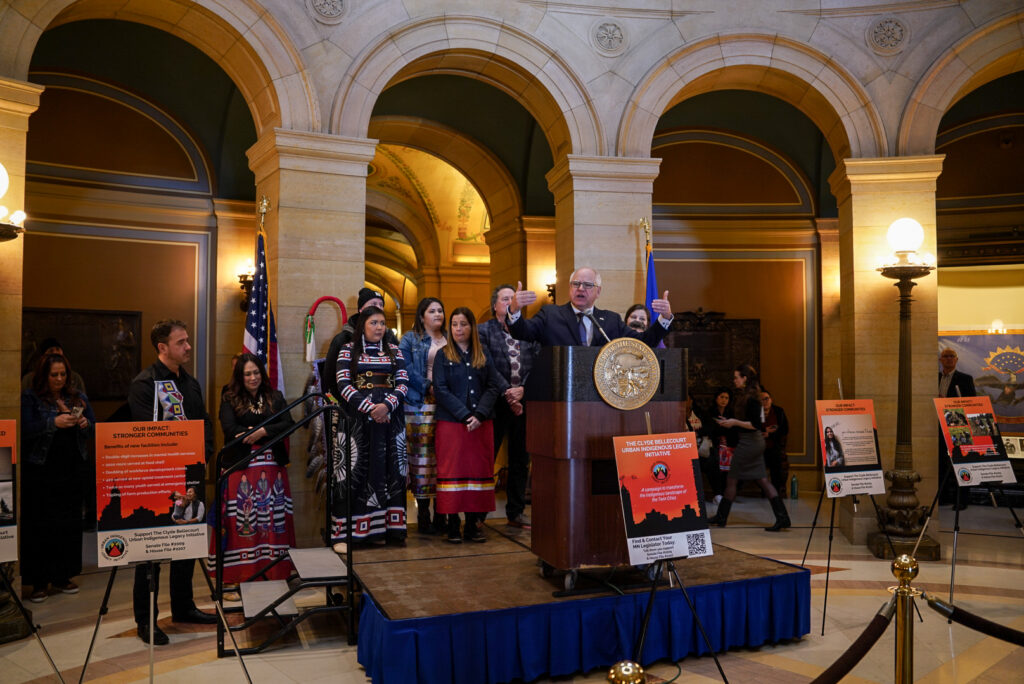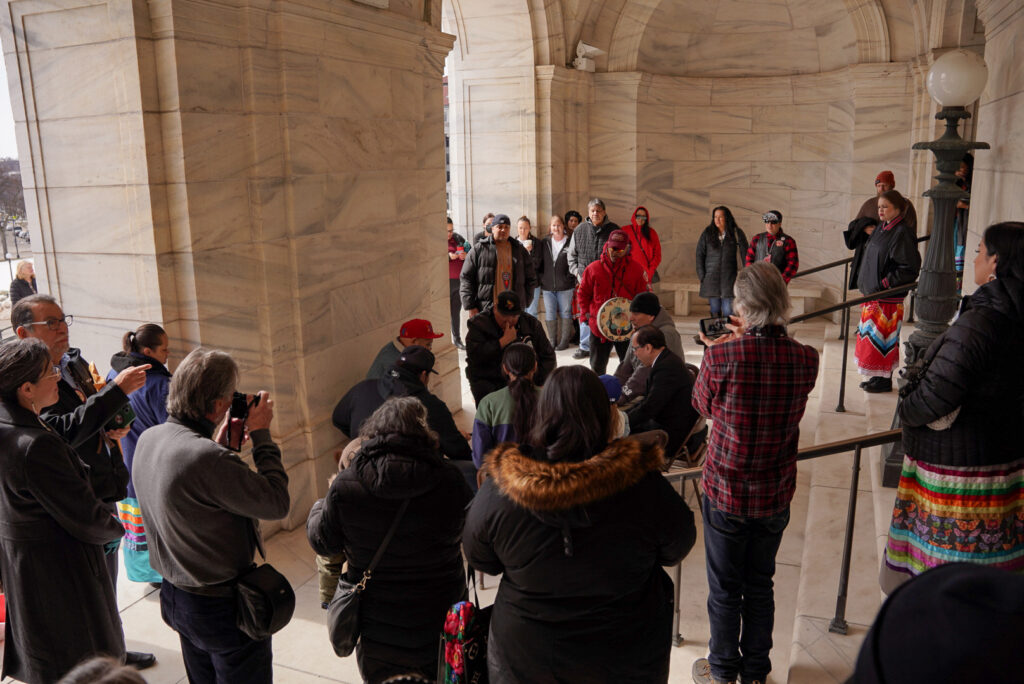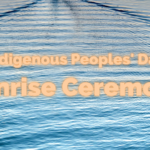
By Ava Kian |
Sixteen organizations are seeking $136.4 million in state funding to construct buildings they say will allow them to do their work more effectively.
Advocates and community members gathered at the Minnesota Capitol, urging legislators to see the importance of funding urban Indigenous organizations and improving their infrastructures.
They are calling it the Clyde Bellecourt Urban Indigenous Initiative, named after Clyde Bellecourt, an Indigenous advocate and one of the co-founders of the American Indian Movement in 1968.
The 16 organizations are seeking $136.4 million in state funding to construct buildings they say will allow them to do their work more effectively, said Joe Hobot, president of the American Indian OIC.
“We are good at what we do. We don’t get handouts; we have to earn every penny that is coming through,” Hobot said Tuesday at the Capitol. “We stretch those dollars to the furthest point that we possibly can. We are experts at doing so much with so little. But the costs of retrofitting, refurbishing or building these new buildings just to be able to continue to do business in the 21st century is a tremendous leap forward. And in this respect, we need assistance.”
At the rally, people who work within those organizations explained the community’s needs and how the organizations are struggling with older buildings that limit their abilities.
The proposed bill is backed by Gov. Tim Walz. He and the bill’s authors, Sen. Mary Kunesh, DFL-New Brighton, and Rep. Hodan Hassan, DFL-Minneapolis, spoke at the rally.
Kunesh, who is the first Native American woman to serve in the Minnesota Senate, explained how Indigenous representation was needed to get this bill pushed.
“We are educating our legislators,” Kunesh said. “They don’t know what our ancestors have gone through, when the land was stolen, either through treaties or just stolen outright, when our women have gone missing and murdered at higher rates than any other community, when our kids are removed and put into permanent foster care or adopted out generation after generation after generation. This is news to a lot of people. They don’t understand it. And they don’t understand how resources have either been withheld from our communities, not invested in, or they just don’t even know that we need them.”
Explaining the need
Liberty Greene recalled growing up in south Minneapolis when her mom went to many organizations to support the family. After her home caught fire and the family was unhoused, her mom went to the Minnesota Indian Women’s Resource Center and got housing for her and her five kids, Greene said.
Greene has also participated in many of the services of these organizations, like the Golden Eagles program at the Minneapolis American Indian Center.
“(That’s) where I got to get enmeshed with my traditional culture,” Greene said.
The organizations offer services like housing support, childcare, food shelves, HIV resources and cultural programs. Greene’s mom went to the American Indian OIC, where she received help getting her GED and then went to community college.
The organizations outlined their plan for the funding during Tuesday’s rally. One proposed building would require $37 million. It would create an American Indian Community Center in St. Paul that would combine the Montessori American Indian Child Care Center, American Indian Family Center and Interfaith Action and Department of Indian Work.
Currently, the services are split between buildings into three locations, lowering accessibility, said LaVon Lee, the leadership guide at the Montessori American Indian Child Care Center.
The American Indian Family Center building was built in the 1960s and doesn’t have the capacity for what they are doing, said Laura Dorn, the policy and research director at the center.
“Right now, we’re at capacity. We’re doubled up in offices. The county services that we do have on site, they’re getting shoved into one office because we just need more space, and we’re growing with more services,” Dorn said.
Other projects include the Little Earth Neighborhood Early Learning Center, which will bring upgrades to the center, like HVAC air conditioning in the daycare and improvements to make the space safer.
“The kids will actually be able to go play on the playground outside and this playground, they’ll be safe,” said Joe Beaulieu, the executive director of Little Earth of United Tribes. “Our basement level is like a thousand degrees. We need a new HVAC system; it’s so hot. Just making it more comfortable for everybody that’s there right now.”
Little Earth is also requesting funds to renovate its subsidized housing units, which house around 1,200 people, 98% of whom are Native American, Beaulieu said.
Timeline
Walz said while conversations around the funding needs have been held at the Legislature, this bill is the first action that would attempt to address investments holistically.
“What are we going to do to provide the resources necessary, whether it’s around homelessness, food security, whether it’s dealing with an opioid epidemic and health disparities that impact indigenous communities at a rate seven times higher,” Walz said at the rally.
He has proposed a $2.3 billion cash capital investment bill with $200 million allocated towards equity projects that traditionally haven’t been a government focus.
“We had an opportunity last week to pass a bonding bill … We weren’t able to do that because that takes a supermajority, but we will just simply pay for it. If you don’t want to support it, we will have votes to pass it anyway because these projects are too important,” the governor said. “We got seven weeks to the end of the session. We can truly make transformational change in seven weeks, and our kids can’t wait another year. Our families can’t wait for another legislative session. This is the one.”







